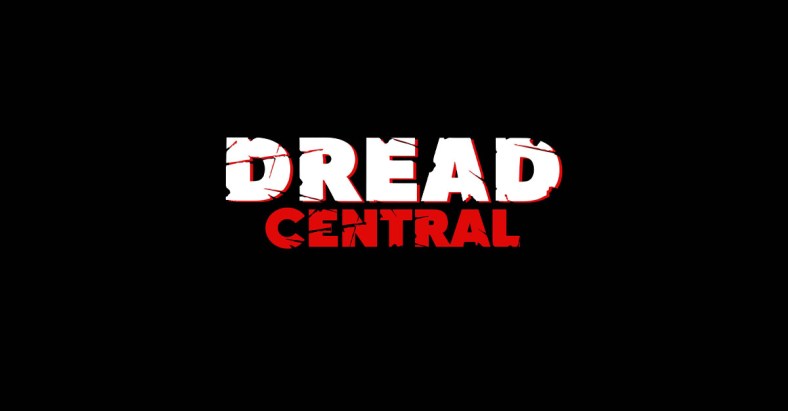Exclusive – David Robert Mitchell Talks It Follows

With his highly anticipated teenage horror head trip, It Follows (review), David Robert Mitchell has finally wrestled his own childhood nightmare to the ground and managed to capture it on celluloid. Bad dreams tend to make great movies, and Mitchell has crafted a frightening film that has the comforts of sleep along with the unnerving feeling of a dream world you desperately want to make sense of but can’t.
In the interview below, Mitchell talks about his inspiration for It Follows and his reluctance to say too much about what it all means. That’s for us to decide.
DC: After watching The Myth of the American Sleepover for the first time last night, I appreciated the style and setup of It Follows even more. You have the same mood in both.
DRM: There’s some total similarity.
DC: Do you consider them to be sister films?
DRM: A little bit, yeah. One of my best friends, he edited both – Myth and It Follows – and I remember when I shared the script for It Follows, he finished it and he was like, ‘This is like a sequel to Myth. It’s just this fucked up nightmare sequel!’ We started laughing about it. When I was working on the script, I had just made Myth because I wrote It Follows in 2011 and I did imagine a similar sort of world in the sense that I imagined characters like the characters from Myth but a little bit older and in that similar environment. What would would happen if they were in the middle of a nightmare?
DC: You’ve obviously been talking about the film a lot. How have you been describing the mythology of the film? People don’t really know what the “It” in It Follows really is. There’s a dream-like quality to your films and this idea originally came from a nightmare you had, right?
DRM: It came from a recurring nightmare that I had when I was really young. A lot of elements of the film truly came from that nightmare. I was being followed by monsters, I instinctively knew it was a monster the way you do in a dream where you just know things. I saw it but it would just look like different people. I remember one moment, I was playing with friends and saw this other kid walking towards me and kind of knew that this was some kind of vampire monster. It was walking very slow and coming straight for me and my friends didn’t see him. I could run away and I could get away but he would just keep coming.

DC: It’s that out-of-placeness, too, that it is really alarming.
DRM: Yeah, totally. I always remembered that nightmare and always wanted to make a horror film. Much later as an adult, I added the sexual element and a bunch of other stuff … The way I see it is these characters are immersed in a nightmare and there isn’t a logical way you can climb out of a nightmare. If it becomes about them solving the origin, I wanted to avoid that. And there are a lot of horror films that do that and there are some that I like and some that I don’t in terms of when it turns into that. Oftentimes, it can be a really interesting idea and I’m really interested in how the characters would react to this nightmare and then it becomes about solving something.
DC: Usually when it’s sequelized.
DRM: Oftentimes, yes, because you don’t know where to go; that often becomes a part of it. I didn’t want to do that with this because, to me, the moment you do that it becomes too logical. It becomes something that’s more grounded in the real world, in our world. It’s either that or it has to become magic and it all becomes about finding the root of magic. To me, a nightmare doesn’t need to rely on magic. Some people may be frustrated by that and some people may like that. I’m not sure where you fall in that.
DC: I’m not frustrated by it. What’s interesting though is that I think the film improves on multiple viewings. Do you think that there are some answers there once you uncover some of the layers? The rules that are in place, for instance.
DRM: Well, the rules are not really my rules. They’re rules that one character has been able to work out for themselves based on what they’ve been going through. We’re not privy to everything they’ve gone through. Some of that is within the movie, some of it you can kind of find. Even looking at the first girl that we see in the film, what is her relationship to these characters? If you think about that, it’ll start to kind of inform how he may be starting to figure this out for himself. But this is his interpretation of what he’s seeing. It may not even be 100 percent accurate. It’s the rules that he’s following.
Follow It Follows into theaters Friday March 13th!
With a riveting central performance from Maika Monroe and a strikingly ominous electronic score by Disasterpeace, It Follows is an artful psychosexual thriller from David Robert Mitchell (The Myth of the American Sleepover).
Related Story: Sundance 2015: Keir Gilchrist Talks It Follows
The film also stars Keir Gilchrist (“The United States of Tara”), Daniel Zovatto (Laggies), Jake Weary (“Chicago Fire”), Olivia Luccardi (“Orange Is the New Black”), and Lili Sepe (Spork).
Synopsis:
For 19-year-old Jay (Maika Monroe, AT ANY PRICE), the fall should be about school, boys, and weekends at the lake. Yet, after a seemingly innocent sexual encounter, she suddenly finds herself plagued by nightmarish visions; she can’t shake the sensation that someone, or something, is following her. As the threat closes in, Jay and her friends must somehow escape the horrors that are only a few steps behind.

Categorized:News
